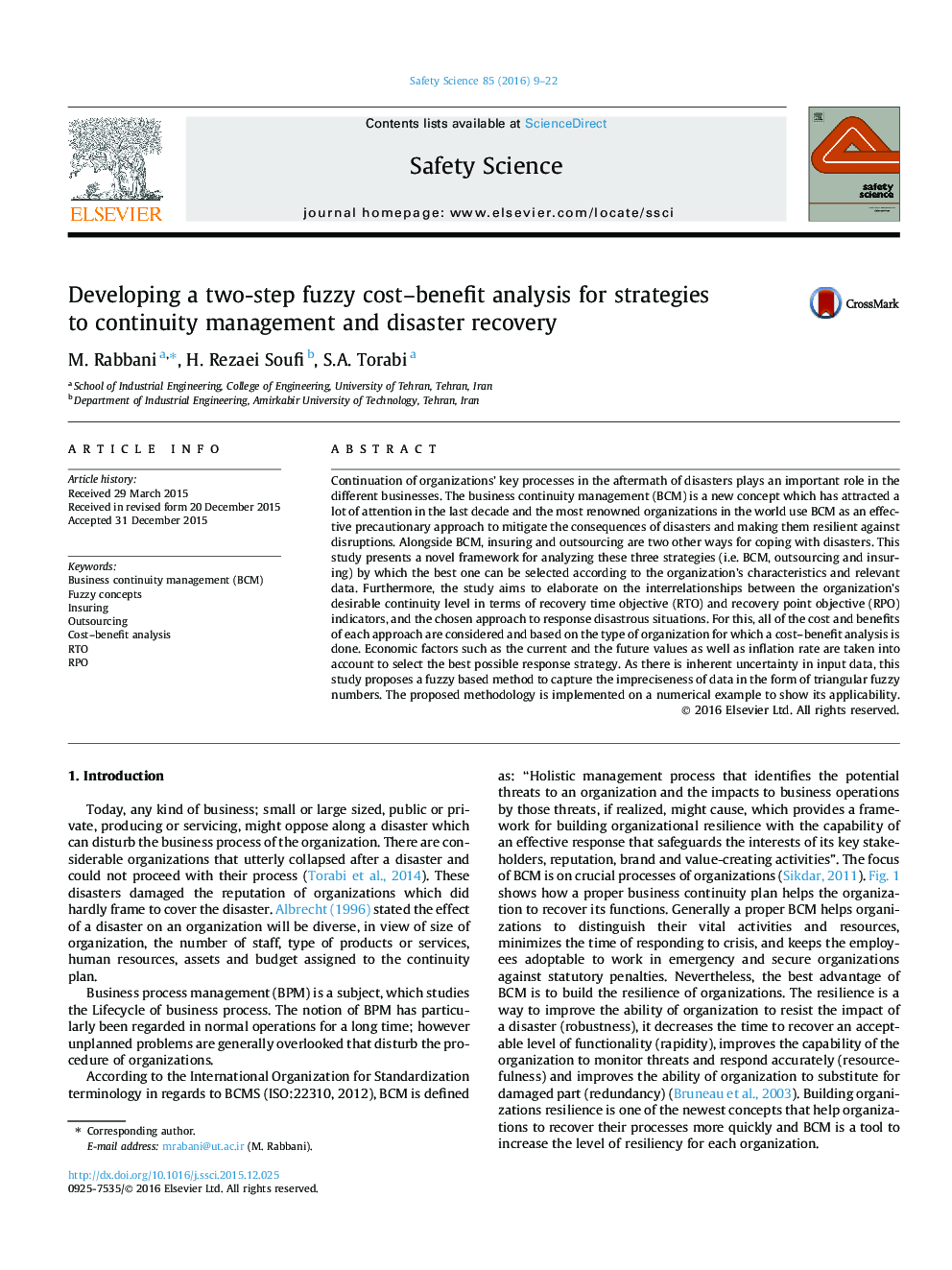| Article ID | Journal | Published Year | Pages | File Type |
|---|---|---|---|---|
| 6975402 | Safety Science | 2016 | 14 Pages |
Abstract
Continuation of organizations' key processes in the aftermath of disasters plays an important role in the different businesses. The business continuity management (BCM) is a new concept which has attracted a lot of attention in the last decade and the most renowned organizations in the world use BCM as an effective precautionary approach to mitigate the consequences of disasters and making them resilient against disruptions. Alongside BCM, insuring and outsourcing are two other ways for coping with disasters. This study presents a novel framework for analyzing these three strategies (i.e. BCM, outsourcing and insuring) by which the best one can be selected according to the organization's characteristics and relevant data. Furthermore, the study aims to elaborate on the interrelationships between the organization's desirable continuity level in terms of recovery time objective (RTO) and recovery point objective (RPO) indicators, and the chosen approach to response disastrous situations. For this, all of the cost and benefits of each approach are considered and based on the type of organization for which a cost-benefit analysis is done. Economic factors such as the current and the future values as well as inflation rate are taken into account to select the best possible response strategy. As there is inherent uncertainty in input data, this study proposes a fuzzy based method to capture the impreciseness of data in the form of triangular fuzzy numbers. The proposed methodology is implemented on a numerical example to show its applicability.
Related Topics
Physical Sciences and Engineering
Chemical Engineering
Chemical Health and Safety
Authors
M. Rabbani, H. Rezaei Soufi, S.A. Torabi,
